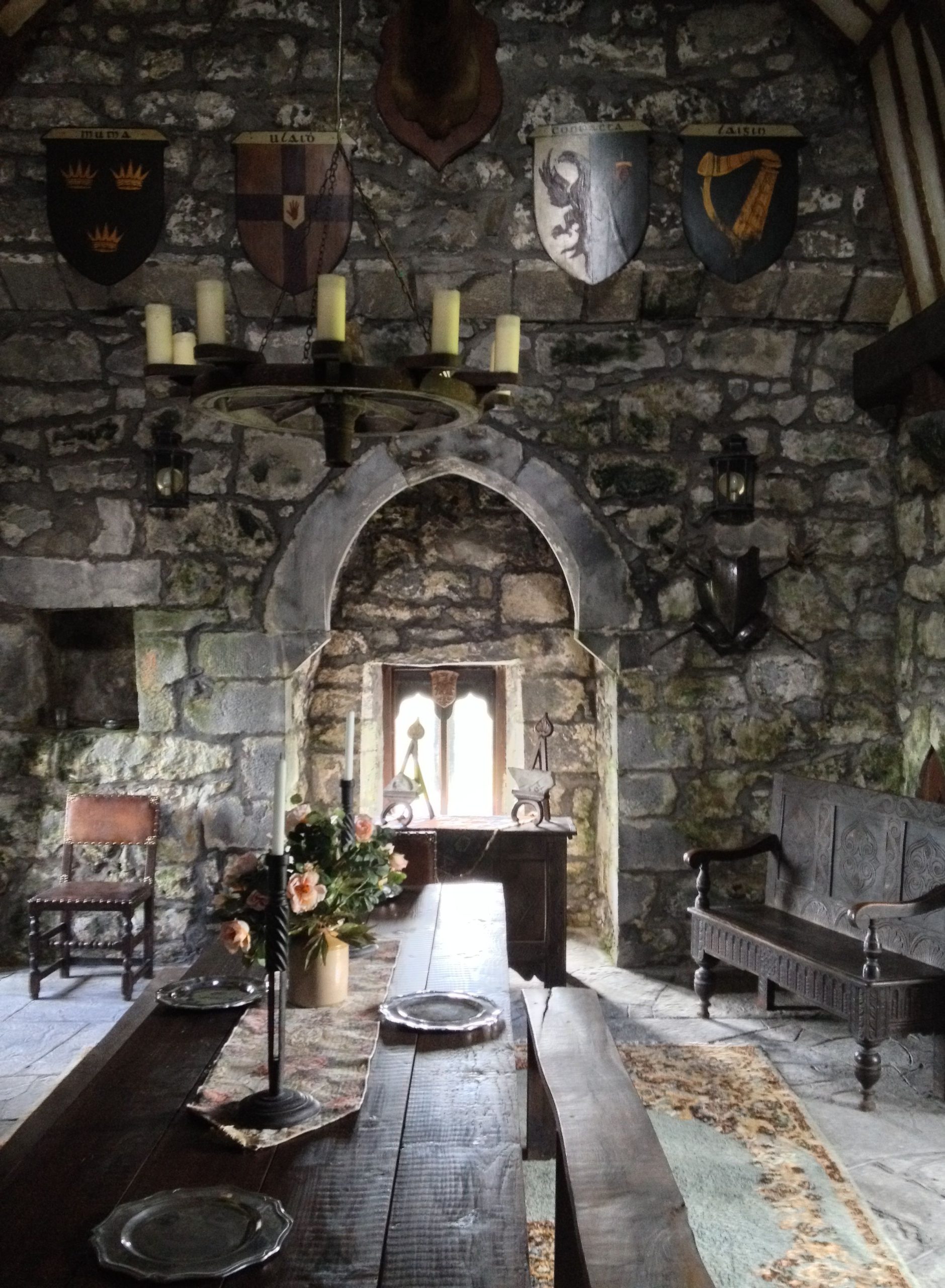Picture yourself wandering through the majestic halls of a medieval castle, where every turn reveals a captivating glimpse into the past. From the bustling Great Hall, where feasts and celebrations unfolded, to the grand Lord’s Chamber, decorated with opulent tapestries and intricate carvings, each room whispers tales of its former occupants. Venture beyond the castle walls into enchanting courtyards and gardens, where serenity and recreation intertwined. Admire the artistry of master craftsmen in the towering arches, delicate sculptures, and vibrant stained glass that adorned these fortresses. And don’t miss the modern marvels that bring medieval splendor into today’s homes, blending ancient charm with contemporary comfort. Let us guide you on an unforgettable journey through the fascinating world of medieval castle interior design.
Medieval Castle Interior Design: It’s Not All Dungeons and Dragons
Okay, maybe there were dungeons. And maybe a dragon or two roamed the countryside. But medieval castle interiors were about way more than just creepy basements and fire-breathing lizards. Imagine “Game of Thrones” with less political backstabbing and more tapestries.
Life’s a Castle: Rooms with a View (and a Purpose)
Castles were enormous, housing not just the lord and his family, but also knights, servants, and maybe even a jester or two. Each room served a specific purpose, much like how modern homes designate spaces for various activities.
- The Great Hall: This was the castle’s central gathering place. Imagine a massive living room where everyone assembled for feasts, meetings, and maybe even the occasional dance.
- The Lord’s Chamber: This private sanctuary served as the lord’s bedroom, office, and personal space. Imagine plush furniture, luxurious fabrics, and maybe even a secret passageway or two.
- Knights’ Quarters: Less extravagant than the lord’s accommodations, these rooms were typically spartan, providing just enough space for a bed, weapons, and maybe a deck of cards.
- Kitchens, Dungeons, and Chapels, Oh My!: Castles also housed essential spaces like kitchens for preparing meals, dungeons for holding prisoners or those who misbehaved, and chapels for spiritual reflection and religious ceremonies.
Building Up the Hype: Architectural Delights
Medieval castle builders didn’t cut corners. They employed impressive architectural techniques to create structures that were both beautiful and impenetrable.
- Vaulted Ceilings: These arched ceilings weren’t just aesthetically pleasing but also distributed weight effectively, enhancing the castle’s structural integrity.
- Gothic Arches: These pointed arches, popular in medieval architecture, added an air of elegance and grandeur while channeling weight downwards, contributing to their strength.
- Stone Walls and Heavy Doors: Security was paramount, so castles featured thick stone walls, heavy wooden doors, and barred windows to deter intruders.
Medieval Makeover: Interior Design with a Rustic Flair
Medieval interior design favored practicality and a connection to nature over minimalist aesthetics and modern furniture.
- Wood and Stone: These readily available materials created a warm, inviting atmosphere. Imagine exposed wooden beams, stone fireplaces, and floors adorned with furs and tapestries.
- Tapestries: The Original Wall Art: These woven masterpieces weren’t merely decorative; they also insulated the castle against cold and dampness while showcasing the owner’s wealth and status.
- Furniture: Function Over Form: Medieval furniture was built to last, featuring simple designs and sturdy construction. Picture heavy wooden tables, sturdy chests for storage, and chairs seemingly capable of withstanding a siege.
Location, Location, Protection: The Art of Castle Defense
Castles weren’t merely opulent residences; they were fortresses strategically designed to withstand enemy attacks.
- Moats, Walls, and Towers: Many castles incorporated moats (water-filled ditches), curtain walls (thick outer walls), and towers (for surveillance and launching projectiles) to deter potential attackers.
- The Gatehouse: Your One Way In (Or Out): This heavily guarded entrance served as the first line of defense, manned by guards around the clock, making unauthorized entry nearly impossible.
- The Keep: The Last Stand: The keep, a central tower, stood as the castle’s most fortified point, providing a final refuge during sieges—the ultimate safe room.
Unveiling the Great Hall: The Heart of Medieval Castle Life
Step into a massive, high-ceilinged room, the air alive with the aromas of roasting meat and spiced wine. Tapestries depicting epic battles and mythical creatures adorn the stone walls, candlelight flickers across suits of armor, and a roaring fire crackles in a monumental hearth. This is the Great Hall—the vibrant heart of every medieval castle.
More than just a dining room, the Great Hall served as a multipurpose space, hosting grand feasts, important meetings, and even entertaining performances by bards or traveling musicians. The Great Hall embodied the castle’s wealth and prestige. Imagine the lord and lady seated at a massive table on a raised platform, surrounded by knights and advisors, with the seating arrangement reflecting the strict social hierarchy of the time.
Beyond its grandeur, the Great Hall fostered a sense of community. Daily life in a castle could be arduous, but shared meals, stories, and celebrations in this space brought people together. It was a place to unwind, connect, and share in the everyday experiences of medieval life.
Chambers of Power and Luxury: Exploring the Lord’s and Lady’s Quarters
Leaving the bustling Great Hall, let’s venture into the private chambers of the Lord and Lady. These rooms were not just for sleeping; they were expressions of status and personal taste.
The Lord’s Chamber, typically adorned with tapestries depicting scenes of battle and valor, housed sturdy furniture and perhaps even a suit of armor. The massive four-poster bed, draped in luxurious fabrics, served as a kingly retreat.
In contrast, the nearby Lady’s Chambers offered a more serene and refined ambiance. Delicate embroidery and scenes of nature replaced battle scenes, and sunlight streaming through the windows might lead to a private garden—a sanctuary for reflection, managing the household, or enjoying quiet moments with ladies-in-waiting.
These chambers provide a glimpse into the personalities and lives of those who ruled the castle. Every detail, from the furniture to the decorations, reveals something about their values, beliefs, and the power they wielded.
Beyond the Walls: Gardens, Courtyards, and the Castle’s Exterior Spaces
Castles were more than just stone and steel; they also embraced nature’s beauty and bounty. Gardens provided essential food, fragrant herbs for cooking and medicine, and a respite from the confines of castle walls.
Courtyards, often bustling with activity, served as gathering places for fresh air, socializing, and even games. Children played under the watchful eyes of their parents, knights practiced their skills, and people from all walks of life connected in these communal spaces.
But these exterior areas weren’t just for leisure and sustenance; they also played a vital role in the castle’s defense. High walls provided vantage points for guards, and courtyards could be readily defended during an attack. So, when you envision a medieval castle, remember the vibrant gardens, lively courtyards, and other exterior spaces that brought life, color, and a touch of normalcy to these imposing structures.
If you’re looking to bring a touch of medieval charm into your home, you might explore design aesthetics like New Orleans interior design, which often incorporates wrought iron accents and rich colors, or Greek interior design, characterized by the use of columns, arches, and white marble. And for creating a sense of balance and unity in your space, consider principles of harmony in interior design.
- Grass Forever in Livermore: Your Guide to Artificial Turf - April 22, 2025
- German Roaches vs. American Roaches: Key Differences and Control - April 22, 2025
- 150+ Flowers That Start With S: A Comprehensive Guide - April 22, 2025










